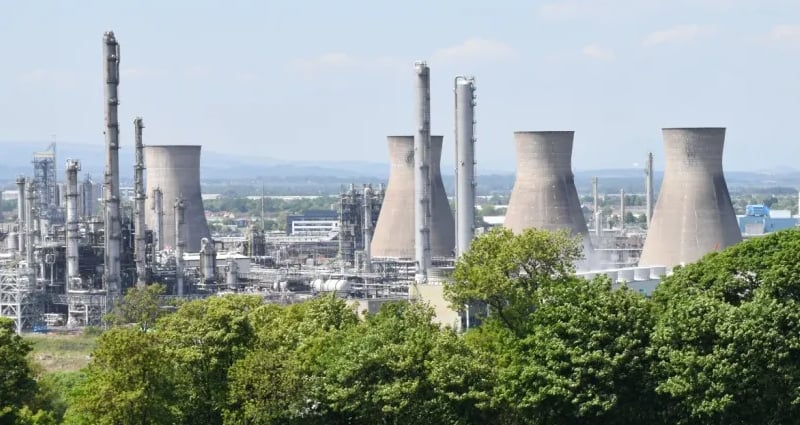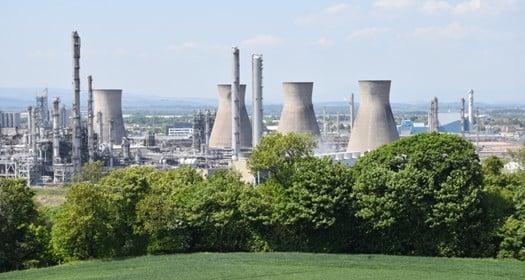Many organisations are undertaking the mammoth task of achieving net-zero carbon emissions, a...
Carbon credits have had some negative connotations due to their misuse in the past. However, they also represent a way for firms to feasibly reach net-zero status by the 2050 deadline.
Carbon credits can be a blessing for engaged organisations that have done everything in their power to reduce their emissions but still see some difficult-to-abate emissions remain, for organisations who want to achieve the point of net-zero emissions even faster and even organisations who want to go beyond net zero to become net negative.
In this case, organisations need to build better offsetting transparency and only involve themselves with high integrity projects that can promise the right impact paired with a responsible approach to Carbon Capture and Storage (CCS).
Carbon Credits, Explained
Carbon credits are products that organisations, governments and other entities can purchase. Each credit essentially acts as a permit, allowing companies to use carbon, measured to the tonne, in exchange for an offsetting activity such as Direct Air Capture (DAC).
Though it does matter how carbon credits are used. If organisations are using them in the context of a wider carbon management strategy, which verifiably moves the entire company towards net zero, carbon credits can act as a vital supplement. Used alone and not embedded into a wider program which reduces carbon emissions as much as possible, carbon credits hold little value. Organisations should always look to carbon reduction before purchasing credits that offset remaining emissions.
Types of Carbon Credits
At present, there are two types of carbon credits available, representing two different carbon markets. Together, they become a carbon credit ecosystem where credits are exchanged for activity.
Compliance carbon credits are mandatory. One such example is the EU and UK emission trading schemes (ETS), where emitters from certain industries (e.g. aviation, shipping, cement and steel) are allocated an annually decreasing number of carbon credits.
Companies which reduce their emissions faster, can sell these credits to those who are not reducing fast enough. Importantly, these credits do not represent any removal of carbon from the atmosphere — they just represent the right to emit a ton of CO2 into the atmosphere.
On the other hand, voluntary carbon credits aren’t mandatory. Where the compliance credits represent the “right” to emit a ton of carbon into the atmosphere within a regulated industry, voluntary carbon credits usually are bought by companies who voluntarily want to make good the environmental damage from a ton of carbon they had emitted.
These voluntary credits can come in different forms, as “avoided emissions” (representing the fact that someone else would not emit carbon in return for this payment, e.g. protecting a tree from being chopped down and burned), as “nature-based removals” (representing the building of additional natural resources which will capture and store carbon for a few decades, e.g. planting a new forest), or as “engineered removals” (representing engineered infrastructure which captures and stores carbon permanently, e.g. Direct Air Capture).
By buying such voluntary carbon credits, companies help finance and kick-start such sustainability projects.
That said, the voluntary carbon credit market has room for improvement. Voluntary credits need to be verified as reputable, especially when falling into the categories “avoided emissions” or “nature-based removals”.
As the demand for voluntary credits expands in a net zero world, these credits need to become more accessible and more tradeable. The scaling of the voluntary credit market is currently one of carbon removal’s greatest challenges.
The Emergence of Carbon Credits
Carbon credits were introduced as carbon removal technologies were developed. Methods such as Direct Air Capture (DAC) use carbon credits as a method of exchange.
It’s fair to say that carbon credits are still in their infancy, even though they’ve been traded for several years now. As Direct Air Capture (DAC) technology is still finding its feet, with plans on the horizon to make it more accessible and geographically widespread, carbon credits are also becoming more bonafide.
Now, they’re starting to represent a genuine way to creep that bit further to neutral carbon status.
The onset of carbon credits has also been encouraged by ambitious carbon targets. The notion of net-zero and the introduction of the ‘race to net-zero’ spurred on by treaties like the Paris Agreement has only made the need for a carbon credit more readily available worldwide.
Problems with Carbon Credits
Although an idealistic concept for companies trying to neutralise remaining emissions from their operations, carbon credits haven’t always had the best reputation. From quality concerns to ordinary teething problems, carbon credits have a question mark above them for many corporates, even though they could be just the thing to help them account for their difficult-to-abate emissions.
Creating High Integrity Projects
It isn’t enough for credible carbon companies to continue trading and hope the reputation of their product will improve. There also needs to be organisations that support this exchange and regulate the market — an activity that’s starting to see some momentum.
For example, the Science-Backed Targets Initiative (SBTi) has recently set a net-zero standard, offering organisations an opportunity to have their carbon targets and plans independently verified. High-quality, permanent carbon removal will be a critical component in these SBTi goals. As more organisations develop SBTi net zero standards, the demand for high integrity carbon removal credits will expand.
Using other frameworks like the Oxford Principles, organisations can deliver credible plans with contents that aren’t plucked out to sound good for a PR campaign. Even for the most engaged organisations that genuinely want to cut carbon emissions and reach net-zero the right way, these principles provide the much-needed education on creating sustained change.
Demand for Carbon Credits
Despite carbon credit’s complicated history, the demand is skyrocketing as early adopters become case studies of how to progress towards carbon goals.
The 2050 goal also adds a sense of urgency, encouraging organisations to be inventive when thinking about ways to hit this target. As more and more companies set their net zero targets and realise that, even after all feasible reductions, some difficult-to-abate emissions will remain, carbon removal credits are becoming increasingly appealing.
Demand Outstripping Supply
Quickly, demand is outstripping supply regarding carbon credits as only a few projects are deemed to be credible, high-quality, permanent carbon removal. Direct Air Capture (DAC), thought to be one of the most responsible and permanent carbon removal methods, is still being developed, with only a few small-scale plants available worldwide.
This demand is only set to rise further as we come closer to the all-important 2050 deadline.
“The Taskforce on Scaling Voluntary Carbon Markets (TSVCM), sponsored by the Institute of International Finance (IIF) with knowledge support from McKinsey, estimates that demand for carbon credits could increase by a factor of 15 or more by 2030 and by a factor of up to 100 by 2050. Overall, the market for carbon credits could be worth upward of $50 billion in 2030.”
Making Carbon Credits More Accessible
Slowly but surely, carbon credits will become more accessible as new carbon removal methods are developed and as Direct Air Capture (DAC) is available on a larger scale. However, carbon credits will likely remain exclusive as the process of capturing carbon and storing it requires continual monitoring and expertise, as well as valuable space in suitable underground geological sites.
The latest development in Direct Air Capture (DAC) is the announcement of Europe’s first large-scale DAC Plant located in Scotland that is headed by Storegga in partnership with technology experts, Carbon Engineering. When operational in 2026, this site will have the capacity to capture and store between 500,000 and 1,000,000 t CO2 per year — a number far greater than any similar sites in current operation.
By 2050, it’s estimated the world will need around 50,000 DAC plants for net-zero to be feasible.
Build Better Offsetting Transparency with a Permanent, Safe Solution
For those seeking carbon credits yet rightly want to consider the credibility of their source, learn more about Direct Air Capture (DAC). This technology is now established as one of the only reputable ways to conduct safe, permanent carbon removal.
With DAC, companies are safe in the knowledge that carbon is safely captured, permanently stored and continually monitored. This means the environmental benefit of a carbon credit isn’t short-term, allowing you to genuinely offset your remaining emissions and become truly net zero or even net negative.
Learn more about Direct Air Capture here.




.webp)

